Ultimate Guide To The Best Wood For Smoking In 2020
Along my barbecue journey I’ve had great successes and great failures using different types of wood. When it works out like you hoped it would it really is a proud moment. Pairing wood flavors with each particular meat can really be more of an art than a science, and personal preference definitely comes into play.
In saying that, once you’ve practised smoking a meat a few times, finding the right wood with the right properties and flavors can really lift the smoking game to the next level. Before looking at flavors it’s good to understand the fundamentals behind smoking wood.
What Happens When Wood Burns?
When wood is exposed to heat its compounds go through a series of changes. The process of burning wood goes through dehydration, vaporization, ignition and combustion, and finally char burning. During each of these stages the compounds within the wood react.
The composition of the wood used for smoking, dried hardwood, is made up on average of around 5% water, 40% cellulose, 40% hemicelluloses, close to 20% of lignin, and the remaining 1-ish% are minerals. These percentages vary depending on the wood species and subspecies, as well as more general variables such as age & climate.
The cellulose and hemicellulose are made up of carbohydrate sugars. Lignin is a compound found predominantly in the cell walls, which gives the wood its strength. The common minerals found in wood are usually traces of potassium, sodium, and sulphur, but can differ depending on the wood itself.
When the wood begins to smoke, the minerals and molecules in the reaction give off the classic smoky aroma and flavour.
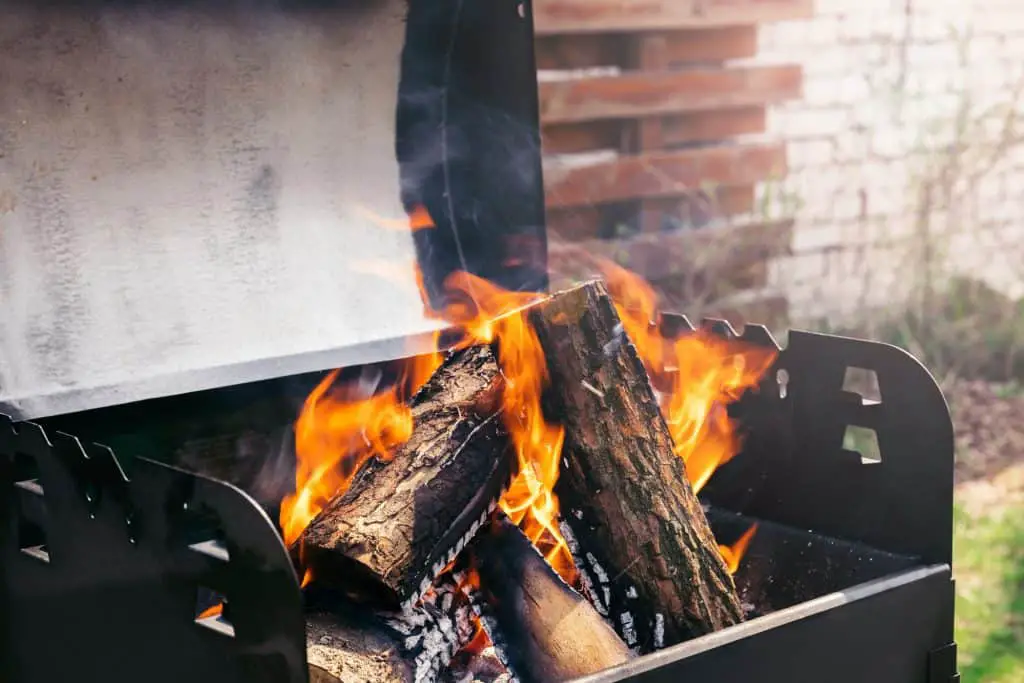
The Four Stages Of Burning Wood
Stage 1: Dehydration
Dehydration, the first out of four stages of burning wood, occurs at varying temperatures, up to about 500°F. Before the wood can start to burn, the moisture must evaporate until the wood is dry enough to combust. In order to evaporate the water must absorb heat until it rises in temperature enough to turn from liquid to gas.
During this time the wood isn’t actually providing any heat, but is actually absorbing it from the fire.
Stage 2: Vaporization
As the temperature rises above around 450°F to 540°F, and the wood has been heavily dehydrated, the hydrocarbon compounds within the wood begin to break down and vaporize. This process is referred to as pyrolysis. The complex process of pyrolysis releases combustible byproducts, made from hydrocarbons in the form of a light fog or tar.
Heat is still absorbed during this process, but as the heat rises past this stage, these compounds begin to combust and release heat.
Stage 3:Ignition and Combustion
Combustion begins between 540°F and 1225°F, but can vary depending on the wood species and also how much oxygen is available to ‘feed’ the flames.
As the wood burns it’s carbon molecules react with the oxygen, and the combustible gas carbon monoxide is made. If there is enough oxygen available, this carbon monoxide forms carbon dioxide. Combustion of wood in this way produces water vapor, carbon dioxide, heat, and the remaining non-combustible compounds are left as ash.
This is the most important stage of burning wood when it comes to cooking. Flame and smoke are present, and one of the byproducts, nitric oxide, plays a huge part in the overall smoking of the meat.
The aromatic qualities of the smoke come from guaiacol and syringol, and the best temperatures to optimise the traditional smokey and accompanying flavours is around 650-750°F
Stage 4:Char Burning
Charcoal begins to form once the majority of the organic and combustible compounds have reacted with the heat and burned off. Carbon is the remaining element, and it is able to burn with little or no flame, which is why you see it glowing red hot without any flames! Charcoal makes a great fuel for grills and smokers, and can exceed temperatures of over 1100°F.
Note: These stages can all be happening at the same, progressing in different parts of the wood as it burns
How Fuel Type Impacts Flavor
Cooking with heat from wood, charcoal, gas, pellets, or electricity produces distinctly different flavours. This is because each fuel type adds different properties to the combustion byproducts. The actual smokey and unique flavour of barbecue always comes from the smoke produced by the wood, either using wood logs, chunks, chips, or pellets. But, each fuel type contributes different compounds while heating the wood.
Gas
Both natural and propane gas are common fuels for the everyday grill or smoker. The gas when exposed to air combines with oxygen and can be ignited producing water vapors, and carbon dioxide and carbon monoxide. This naturally doesn’t add a flavour to the meat while cooking.
This is where wood chips can be used, being able to add flavours from the minerals and compounds within the wood as it burns and turns to smoke. The juices that drip off the meat while it cooks can also turn to steam and return as moisture back into the meat to flavour it.
Charcoal
Charcoal, being of almost pure carbon from the burning wood, burns much hotter than the wood itself. Up to temperatures exceeding 1100°F. Like when burning wood, charcoal produces combustion byproducts. Although less than burning wood, these byproducts add the smokey and unique tastes of barbecue and the essence of the wood itself.
Charcoal is arguably one of the best and most popular traditional fuels to use to grill and smoke meat because of these properties.
Electric
Cooking using electricity relies on the strong heat that comes from a metal coil. This means there is no flame at all, and therefore no added flavors or minerals. However, you can still find success by using wood chips, but less powerful smoky flavor overall.
Types Of Wood
The best woods for use in cooking and smoking is dried hardwood. These hardwoods include fruit and nut woods, which impart fruity, nutty, or sweeter smokey flavours.
Softwoods, like pine, redwood, and other coniferous/evergreen trees are not recommended for cooking as they have a strong pungent sap and burn very quickly.
Overview Of The Most Popular Wood Flavors
Apple
- Flavours: Mild, sweet and fruity flavor
- Recommended for: Pork
- Not Recommended For: Beef
Cherry
- Flavours: Sweet and fruity. Can pair great with oak
- Recommended for: Beef, poultry, or pork
- Not Recommended For: Fish
Hickory
- Flavours: All-rounded, strong smokeyness, and bacon-like
- Recommended for: Beef, poultry, or pork
- Not Recommended For: Fish
Maple
- Flavours: Mild and sweet
- Recommended for: Pork
- Not Recommended Fish
Mesquite
- Flavours: Very strong smokey flavour. Bust used in open-air
- Recommended for: Beef or poultry
- Not Recommended For: Pork or fish
Oak
- Flavours: Medium smokey flavour
- Recommended for: Beef
- Not Recommended For: Fish
Pecan
- Flavours: Mild and nutty
- Recommended for: Beef, poultry, or pork
- Not Recommended For: Fish
Apple
Apple is a popular choice and is a classic smoking wood. It’s very versatile, and delivers a mild, sweeter and fruity flavour. Most of the time it’s paired with things like ribs, fish, vegetables. It doesn’t provide the strongest smokey flavour, but its other flavors compliment the smokey and savoury flavors of the meat well.
Cherry
Cherry wood is known to burn very hot, giving off a good amount of smoke. It provides more of a mild smokey taste. It’s quite sweet, and fruity. Cherry works very well when blended with a wood that has a stronger smokey flavor, such as oak.
Hickory
Hickory is definitely one of the most popular smoking woods. It’s famous for providing a solid smokey flavour with a distinct bacon-like profile. Hickory is an all-rounded and strong smokey wood, recommended use on everything except fish, and delivers a particularly delicious flavor to beef, pork, or poultry.
Maple
Maple is a mild smoking wood, which isn’t overpowering. It’s a very popular option for vegetables, poultry, and pork. It’s quite sweet which is great to pair with savoury rubs and seasonings. If you like the sweet essence but want more of an oomph, it can be blended with other woods such as oak.
Mesquite
Mesquite is known to be a very potent and strong flavored smoke. It burns hot and quickly, and let’s off a very high amount of smoke. Mesquite isn’t recommended for closed smoking, as it can quickly overpower the meat and leave a bitter and unpleasant taste. In the right doses, or used in open-air grilling or smoking it can however, pack a strong smokey punch.
Oak
Oak yields a medium smokey flavour, that doesn’t tend to overpower meats. It doesn’t have any sweet, fruity, or nutty flavors and tends to hero the smokiness. The smoke is very consistent and clean. It does work very well blended, as you can deliver a solid smokiness from the oak, and pair it with a fruity, or sweeter wood for a different flavor profile.
Pecan
Pecan is a favourite for those that enjoy a nutty smoke that doesn’t overpower the food. It’s slightly sweet, and provides a great solid smokey taste. It is able to work it’s magic a lot quicker than other woods too, which makes it a great choice for shorter cooks. However, If using it for longer smokes it still won’t overpower the meat.
Best Wood For Smoking Different Meats
Quick Overview:
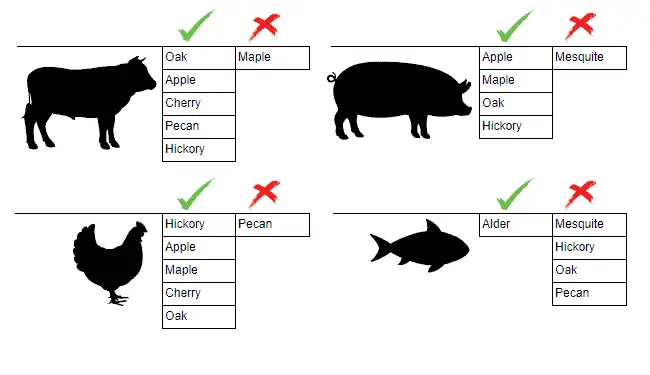
Best Wood For Smoking Pork
Pork has a naturally salty taste, and most cuts are quite lean. Most woods actually work well with pork, and therefore personal preference to which flavor you lost most comes into play. Pork pairs very well with sweeter or fruitier flavors. This is why you may see a lot of great pork dishes accompanied by apple, plum, or other sweet sauces.
When smoking, apple and maple are both top picks due to their flavor pairing and mild smokiness. However, if you prefer a stronger smoke then oak can be utilised by itself, or even mixed with your favourite sweet wood.
Best Wood For Smoking Pork Ribs
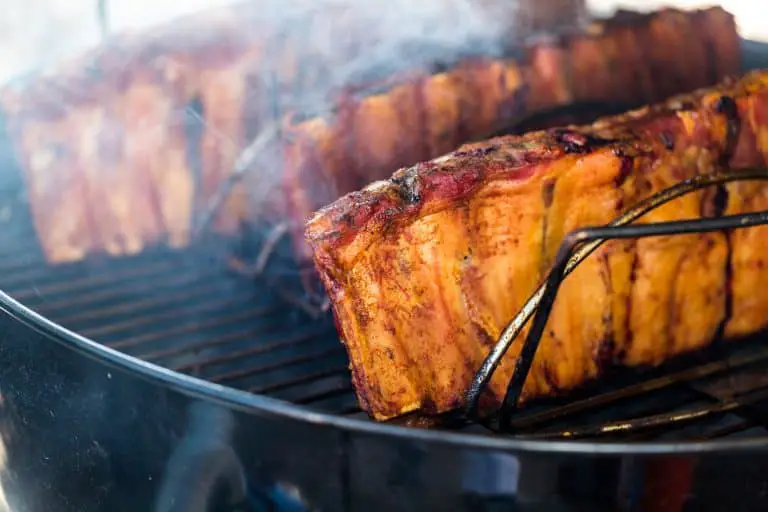
Pork ribs have different composition and distribution of fat and meat than other pork cuts. Although you can certainly use oak, apple, or maple, a dream pairing is actually using hickory. Hickory brings an all-rounded, smokey but bacon-like sweetness that enriches the overall flavour of the ribs.
Best Wood For Smoking Brisket and Beef
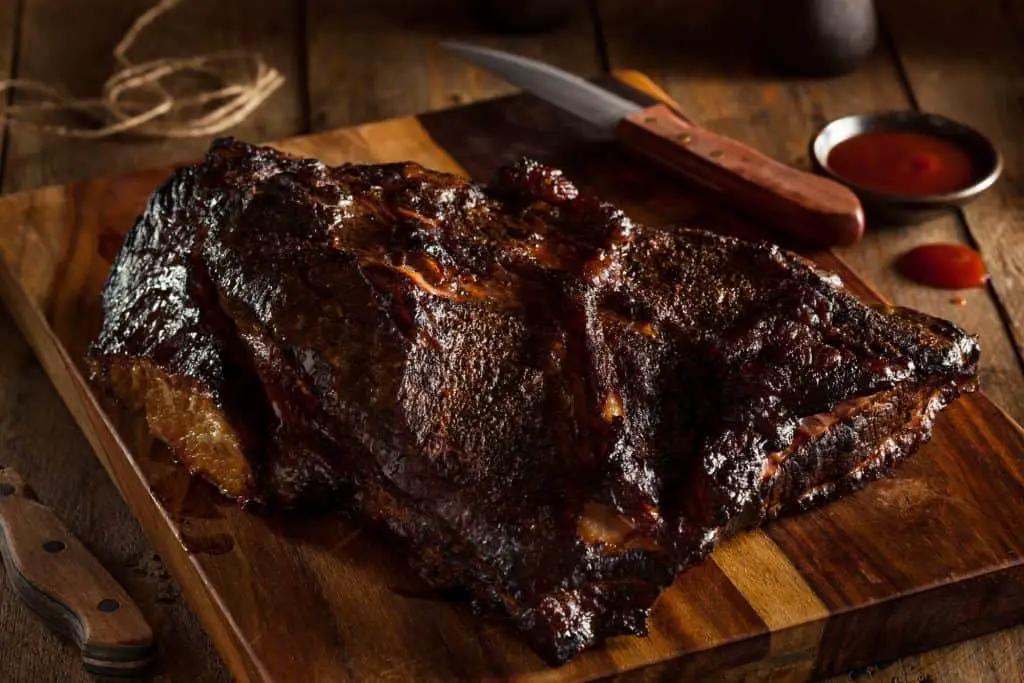
Beef, including beef brisket, has a uniquely savoury and rich flavour. For this reason, lighter smoking woods tend not to deliver a large enough smokiness to make a great impact on the overall flavour profile. Smoking wood is down to personal preference however, so if you prefer a more subtle smokiness then lighter smoking woods such as apple, cherry, or pecan can still go well.
In saying that, smoking brisket or other beef cuts using oak is our top pick. Oak burns well over longer time periods which is ideal for when cooking brisket low and slow. It has a prominent smokiness, but won’t overpower brisket or beef and won’t leave bitter undertones as it compliments the rich savoury flavor.
If you do like a little bit of sweetness, oak also blends very well with apple or cherry to deliver a sweetness to the exterior of the meat. This can be a prime choice if you aren’t using a naturally sweet rub too.
Best Wood For Smoking Chicken
Chicken provides a great flavor canvas that you can really get creative with. It’s a very forgiving meat when smoking. Apple and cherry woods go a long way with chicken, but overall hickory delivers the best traditional barbecue flavor.
Usually when smoking with hickory, over longer times you are sometimes left with a more bitter taste on the skin. Therefore, it will work more ideally on shorter cooks, such as on chicken wings, legs, or breasts.
If smoking the whole bird over a longer period of time, you could consider using lighter smoking woods such as apple, or cherry. If you’re a fan of the traditional barbecue flavor, oak is a very viable option, and is certainly the overall best wood for smoking chicken wings.
Best Wood For Smoking Turkey
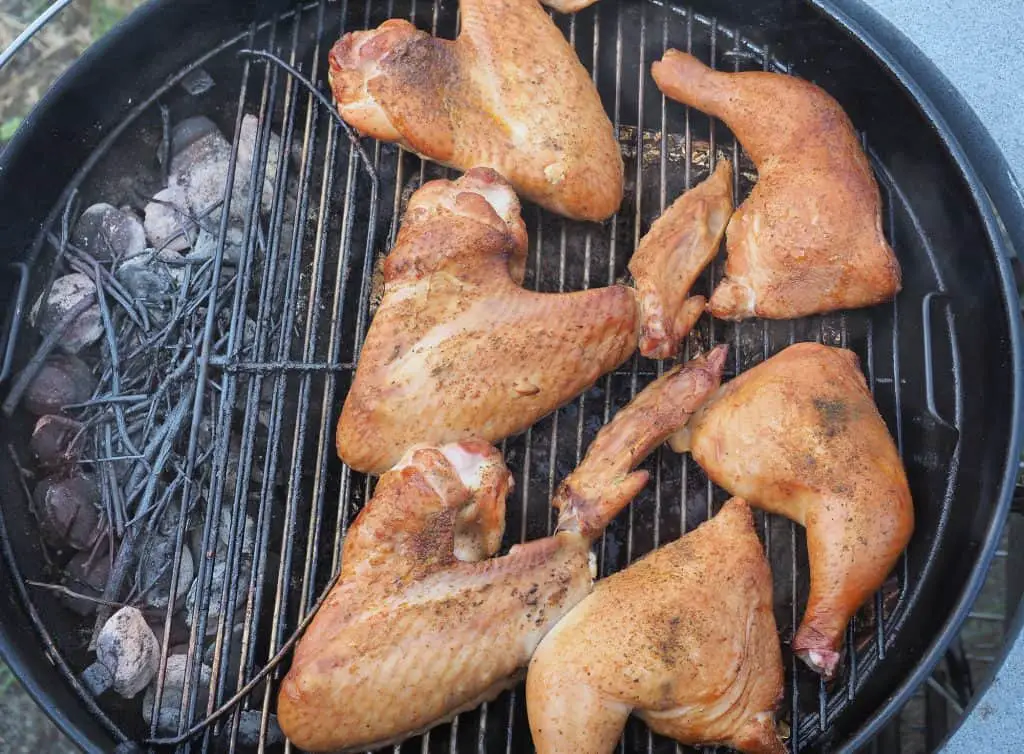
Turkey is one of the most glorious meats to serve up at Thanksgiving, Christmas, or any gathering. If done correctly, it can be wonderfully smoked. Similarly to chicken, you really can get creative with it’s flavor profile – but it does naturally pair well with lighter, sweeter, and fruitier woods.
For this reason, the best wood for smoking turkey is either maple, if you prefer a subtle smokiness and sweetness, or oak if you prefer a stronger smoke without it being overpowered. Oak is a safe and consistently great option as it’s ideal for longer smokes.
Best Wood For Smoking Fish
Traditionally fish, such as with salmon and tuna, is best smoked using a mild wood. You want to be careful to not over-smoke fish, as it will quickly overpower it, and can cause more harm than good. Therefore, using a wood like alder which tends to not burn as hot as other woods, will do the trick to impart a subtle smokey flavor.
Best Wood For Smoking Vegetables
Depending on the vegetable, there will be more or less suitable options. However, you can’t go wrong with delivering a medium smokey flavour, so that you won’t overpower the natural flavors. For this reason one of the most common and promising woods to use is actually maple. It helps the vegetables sweetness shine, and delivers a nice notable undertone of smoke.
Wood Shapes And Sizes
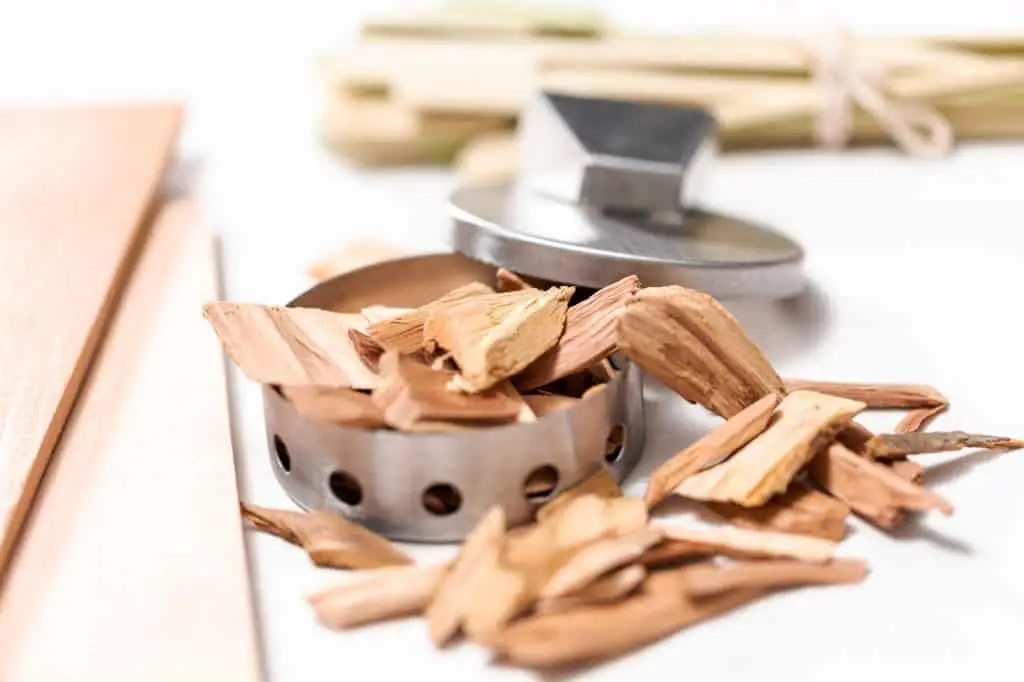
Most modern smokers come specialised to smoke using one type of wood size, such as with pellet smokers. Electric and gas smokers usually require wood chips. It’s important to know that the different sizes and types of wood do have different combustion properties, and influence flavors differently.
Logs
Logs are the most traditional way to grill and smoke, often used in open style pits, or for larger spit roasts. Although not used as often in modern times, they are still viable if you have the right pit or apparatus to control the flame and smoke.
Wood Chunks
Wood chunks are essentially logs that have been broken down into smaller chunks. Sometimes they can be treated, but dried natural hardwood chunks are always best. Wood chunks are great to use if your smoker can accommodate them. They have great temperature control as they burn more slowly than chips and pellets, but don’t require the same high temperatures that full logs need to produce a great smoke.
Wood Chips
Chips are made for use in electric, gas, portable, or smaller smokers. Although they don’t often produce as much smoke as wood chunks they certainly still do the trick. They can also be used on a charcoal or gas grill to convert it to a smoker using indirect heat.
Using a charcoal grill, you can safety pile the charcoal on one side and add wood chips. On the other side you can place the meat so that it isn’t being cooked directly over the heat.
Using a gas grill you are able to make a foil package with wood chips inside it with holes poked through to allow it to smoke. Place the foil package in the centre, use one burner to provide heat and allow the wood to begin smoking, and place the meat on the opposite side so it can cook, again, using indirect heat.
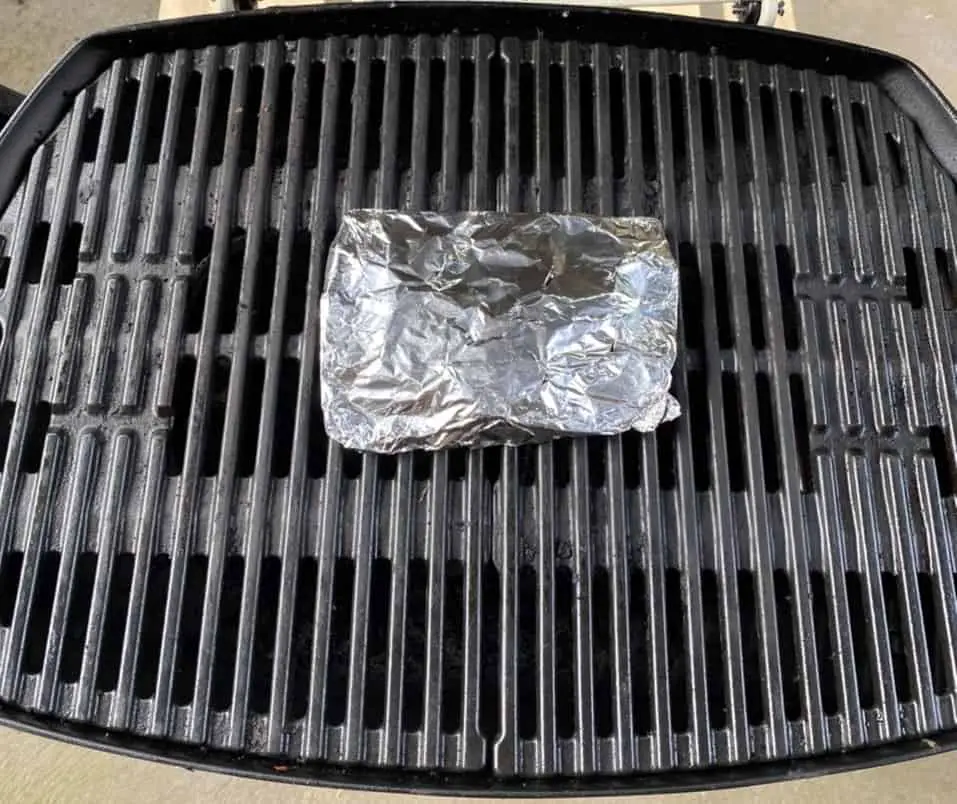
Wood Pellets
Wood pellets are specialised for use in a wood pellet smoker. These smokers usually have automatically controlled hoppers that feed the desired amount of wood pellets to keep a consistent temperature and smoke. High quality wood pellets are carefully constructed by compressing wet sawdust into the pellet shape. When they dry they remain together and not crumble, which helps it burn at a consistent rate and release a smooth and clean smoke.
Final Words
It’s important not to overthink the process of smoking with wood. To be completely honest, if you’re a beginner it’s much better to stick with a single all-rounded wood such as hickory to learn the fundamentals of smoking meat. There are numerous ways to change the flavors of smoked meat, such as seasoning, rubs and smoking times and temperatures.
Many enthusiasts get too preoccupied with trying to get the best pairing that they fail to master the art of controlling the smoke and temperature. Once you are experienced, choosing the right wood comes more naturally, and you will tend to find your favourite.
Happy smoking everybody!
